Determining the viability of rainwater catchment systems on EMI project sites
Most EMI project trips involve some type of water supply, storage, and distribution system. Many times one of the first options considered for water supply is rainwater, since we all know that rainwater is “free”! However, just because the water freely falls from the sky doesn’t mean that this system is free or even worthwhile. There are many varying issues that must be considered when recommending and designing a water system that will be used by the client for years to come and the cost of the actual water is only a small part.
In general, a rainwater collection system seeks to maximize the area in which rainfall can be collected, then transport collected rainfall to a large holding system and finally distribute this water to key locations throughout the site when it is needed.
The first thing that must be realized is that rainwater is not “free.” There are a number of costs involved with the pumps, gutters, and collection pipes. In the end, these costs can rival the cost of a different system. Additionally, since rainwater is not a continual source of water, storage tanks need to be large enough to accommodate prolonged dry spells. This translates into many large tanks spread over the site, which may be difficult to maintain and service.
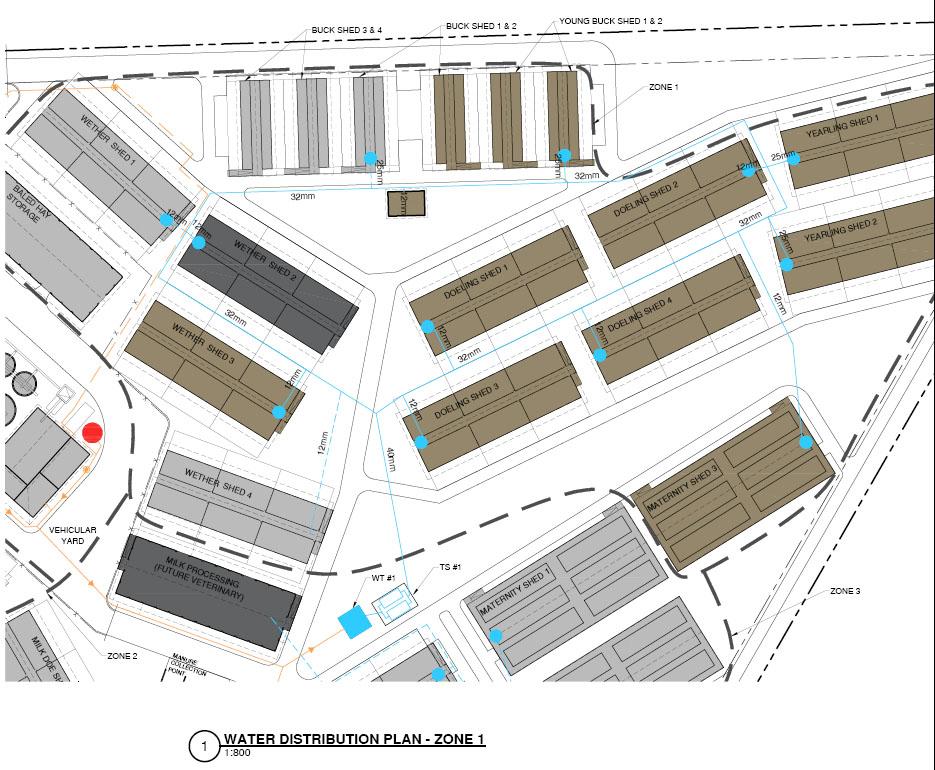
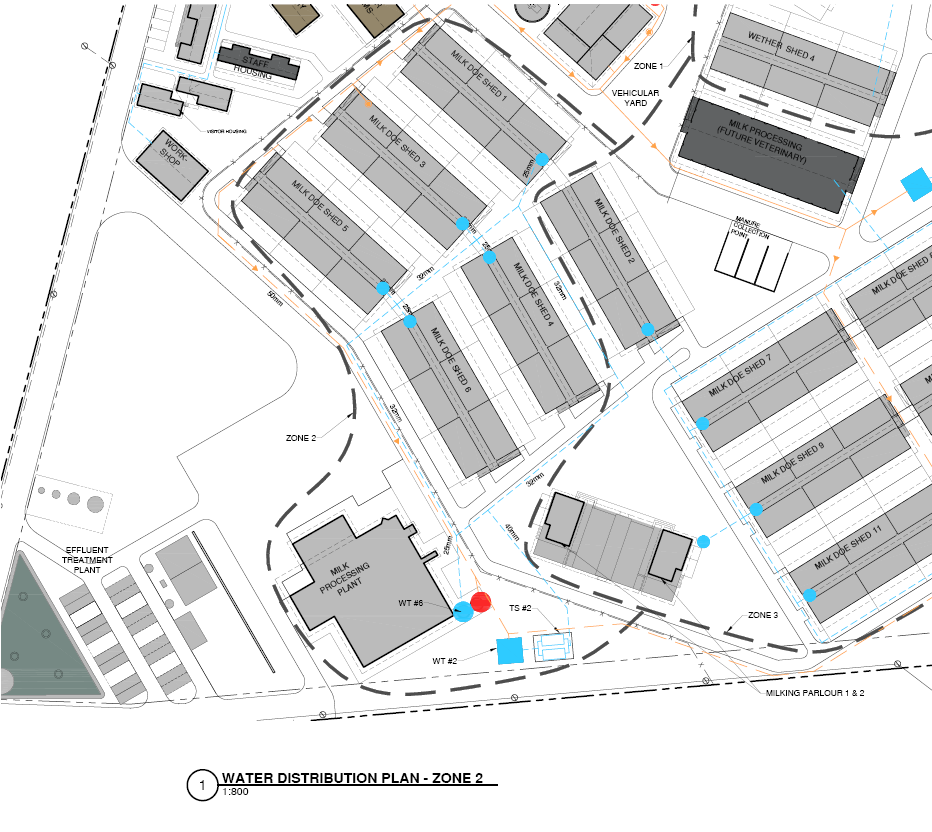

If rainwater is the only source of water, then the entire master plan needs to be designed in accordance with this critical design parameter. The designer must lay out the site master plan with the water system in mind. For instance, the buildings with the largest roof areas need to be placed higher in elevation than the buildings which will need water provided to them. For instance, for one EMI school master plan, the designers placed all of the classrooms, dining halls and staff offices on the higher section of the site (since they had larger roof areas and less water demand), and the dormitories on the lower section of the site (since they required more water). Also, the location of water storage tanks needs to considered in the site plan as large tanks should not ruin the views from the buildings or block breezes entering the buildings.
If rainwater catchment is used as the sole water source, it also might limit the number of people able to be housed on-site. Physically, the site may be able to accommodate 1,000 people, but there may only be enough water to provide adequate facilities for 400. Roofs also need to be designed so as to catch the maximum amount of rainfall while minimizing the gutter length – building designs with gable ends work well for this.
Rainwater collection systems typically make the most sense on sites where there are large roof areas and small water demands. They don’t work well for tight compact sites like multi-story residences or dormitories. These buildings typically have a lot of people under one small roof, and the amount of rainfall able to be captured by this small roof area most likely will not meet the needs of the number of people living there. The best situation for a rainwater catchment system is a large rural school, where there are a number of large classroom buildings with essentially no water demand and a just a few single story dormitories where students live.
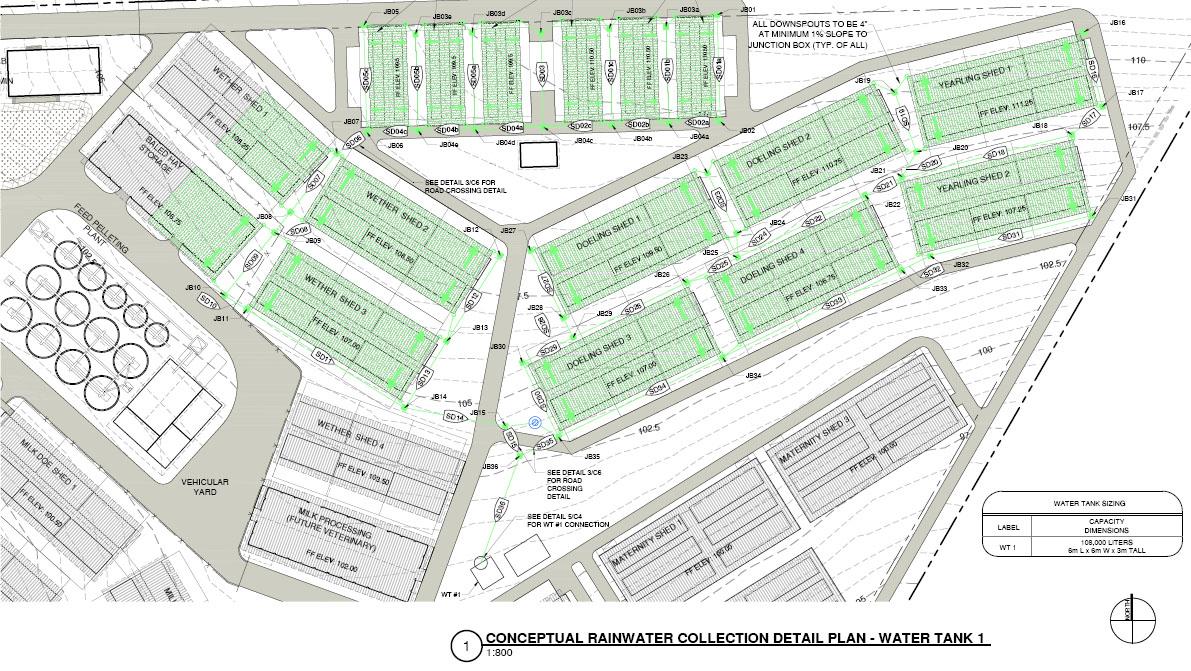
Rainwater systems may not provide enough water to supply typical flush toilets. One of the largest uses of water on a site is flush toilets, so to minimize the daily water demand, alternate toilet facilities may need to be used. Pit latrines, composting toilets or aqua-privy’s are all potential solutions that use less water. While these alternate toilets use less water they are often looked down upon by clients looking to develop modern and attractive facilities.
Rainwater catchment, as the sole water source, should only be used when adequate rainfall data is available. Since this will be the main source of water, and especially if there is no other alternative, it becomes imperative to obtain reliable data such as rainfall intensity curves, number of rain days during the various seasons and average rainfall amounts. Once this data is obtained it is possible to calculate the total expected rainfall on the site per storm, per day or per month. Losing water through first flush systems, leaks or water bypassing the gutters will reduce the amount of water captured and must be accounted for as well. Working with the architect on the team to obtain projected roof area the rainfall data can be used to calculate a total amount of water able to be captured during rain events. The ministry is counting on the EMI team to recommend a viable alternative and if we don’t have the information to stand behind our design we must look for the information or recommend another water source.
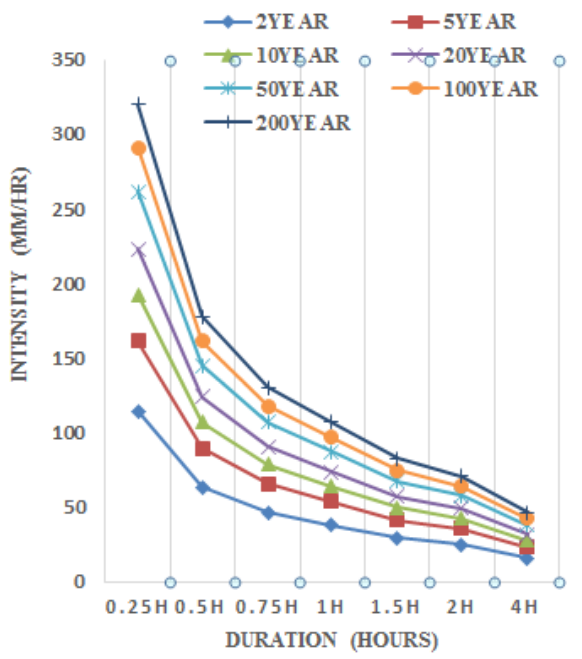
As a part of the design process it is important to look ahead to future drought years or years of less than average rainfall. In these cases it might be possible to purchase water from nearby sources and have it delivered. If this is an option, the site plan needs to accommodate trucks accessing the storage tanks to refill them and the costs of this water and delivery fees need to be considered in the cost comparison of the available water sources. What other options are available to the client for water during these times and what do others in the region do when there is limited water? A thorough design must look at these alternatives and plan accordingly for expected natural events. It may be that relying on rainwater is not the best solution as a backup source will always need to be considered.
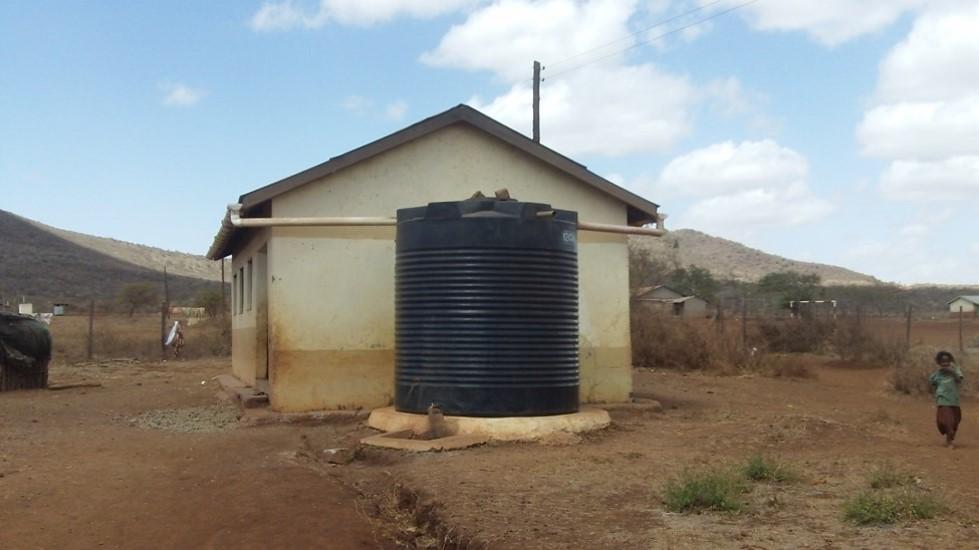
Proper construction of the rainwater catchment system is essential for maximizing water collection. The amount of rainfall that is able to be captured by the system is affected by several factors: maximum and minimum gutter slopes, gutter sizes, and maximum distances from the edge of the roof to the gutter. Without proper construction, much of the water anticipated during the design phase could be lost.
There are many additional resources available to the designer who is considering rainwater catchment. Sites like the US national meteorological department, local tank and pipe suppliers and worldwide climate data all may help contribute to the final recommendation of the EMI team. Research sites have many case studies and articles about rainwater harvesting and as rainwater harvesting becomes more popular throughout the world many local jurisdictions have begun to provide design resources to the design professional community.
While the water falling from the sky is free, there are significant considerations that must be made when recommending a rainfall catchment system, especially if it is the sole source of water. This article has brought up some key issues to be investigated during a typical design trip. Thoughtful discussions with other team members, the project leader and client are all necessary to provide an appropriate recommendation on where to obtain the water necessary for the end users.
The EMI Fund
The EMI Fund supports all that we do at EMI. With a strong foundation, we can keep designing a world of hope.
EMI Tech is looking for contributors – write to editor@emiworld.org with your topic and article outline.
